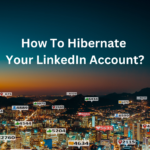LinkedIn is an excellent platform to get qualified leads. However, how do you approach a potential lead? How do you connect with them directly? LinkedIn messages are an excellent tool, but many marketers fail to send the right message to their audience.
LinkedIn messages are a highly effective tool, but they can seem like a waste of time when you don’t have a strategy. Sending the same messages repeatedly with little to no personalization is unlikely to get you any significant results.
Many businesses make the mistake of confusing cold messages with LinkedIn messages. Understanding the difference between the two is especially important and Growth-X offers some insight into writing LinkedIn messages.

I'm Growth-X's digital marketing, copywriter, and customer success expert who focuses on growth hacks for B2B companies. When not working, you might catch me doing yoga or planning my next adventure.


LinkedIn ad targeting is essential for businesses aiming to reach a professional audience with precision. This approach not only improves ROI but also ensures that your marketing efforts…

In today’s fast-paced world, it's easy to feel overwhelmed by the constant barrage of notifications and updates from social media, even from professional networks like LinkedIn. Whether you’re…

If you're aiming to improve your LinkedIn profile and capture the attention of potential employers or associates, uploading your resume and certifications is a smart move to make.…